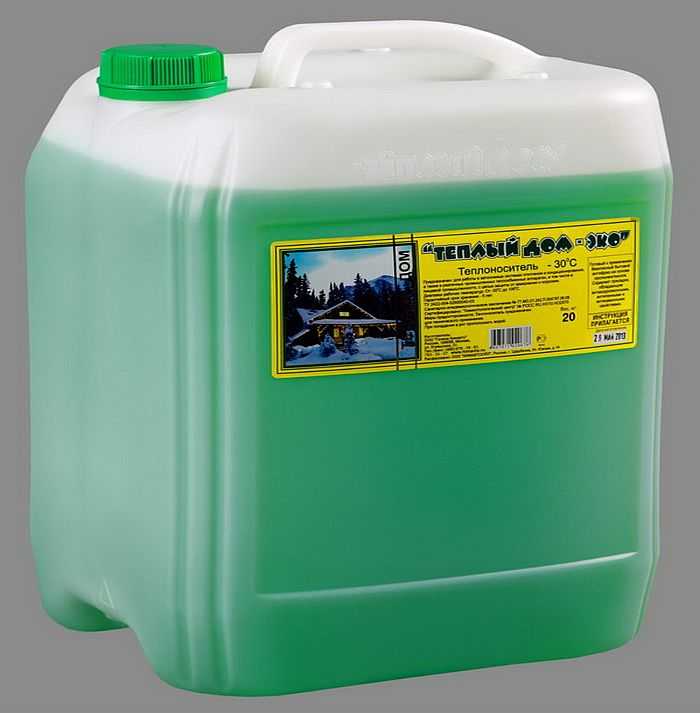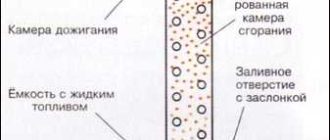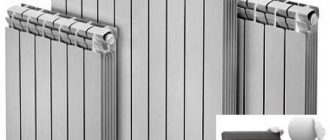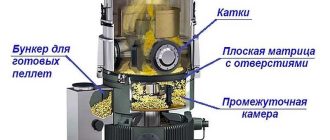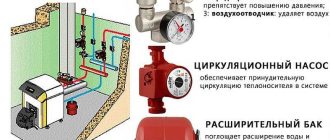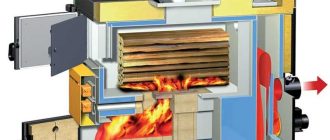Survive in winter without heating in our country is almost impossible, so its device is given a lot of time, effort and money. The most common type of heating in our country is water (liquid) heating. Its constituent part – coolant. How to choose a coolant for a heating system, how to pump it – in the article.
Inhoud van het artikel
What is a coolant and how it should be
The coolant in a liquid heating system is the substance through which heat is transferred from the boiler to the radiators. In our systems, water or special non-freezing liquids – antifreeze – are used as a coolant. Several criteria should guide the choice:
Taking into account these requirements, the most suitable liquid for the heating system is water. It is safe, harmless, has a high heat capacity, and the operating time is unlimited. But in those heating systems where there is a high probability of downtime during the winter, water can serve a bad purpose. If it freezes, it will rupture pipes and/or radiators. That’s why antifreeze is used in such systems. At subzero temperatures, they lose fluidity, but the equipment does not tear. So it is easy to choose a coolant for the heating system from this point of view: if the system is always under supervision and operable condition, you can use water. If the house of temporary residence (dacha) or it can remain unattended for a long time (business trips, winter vacations), if the region may have frequent and/or prolonged power outages, it is better to pour antifreeze into the system.
Peculiarities of using water as a heat transfer medium
From the point of view of heat transfer efficiency, water is an ideal heat carrier. It has a very high heat capacity and fluidity, which makes it possible to deliver heat to the radiators in the required volume. What kind of water should I use? If the system is of the closed type, water can be poured directly from the tap.
Yes, tap water is not ideal in composition, it contains salts, some mechanical impurities. And yes, they will settle on the elements of the heating system. But this will happen once: in a closed system, the coolant circulates for years, a small amount of make-up is required very rarely. Therefore, some amount of sediment will not cause any tangible harm.
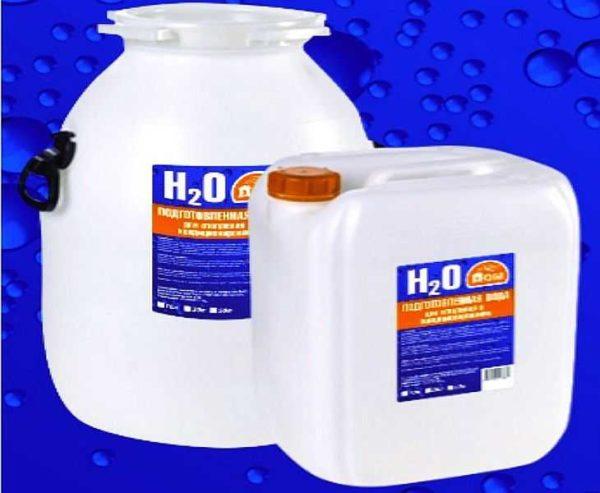
If the heating is of the open type, the requirements for the quality of water as a heat transfer medium are much higher. Here there is a gradual evaporation of water, which is periodically replenished – water is refilled. This means that the concentration of salts in the liquid is always increasing. This means that the sediment on the elements also accumulates. That is why in open-type heating systems (with an open expansion tank in the attic) is filled with purified or distilled water.
In this case, it is better to use distillate, but to get it in the required volume can be problematic, and expensive. Then you can pour purified water, which is passed through filters. The most critical is the presence of large amounts of iron and hardness salts. Mechanical impurities are also to nothing, but with them it is easiest to fight – several mesh filters with a mesh of different sizes will help to catch most of them.
To avoid buying purified water or distillate, you can prepare it yourself. First, pour and stand to settle most of the iron. Standing water carefully pour into a large container and boil (do not cover with a lid). This removes hardness salts (potassium and magnesium). In principle, this water is already well prepared and it can be poured into the system. And then refill it with distilled water or purified drinking water. This is not as hard on the pocket as the initial filling.
Antifreezes for heating
In heating systems except for water pour special non-freezing liquids – antifreeze. Usually these are aqueous solutions of polyatomic alcohols. Not so long ago on our market appeared antifreeze based on glycerin. So now there are three types of non-freezing liquids for heating systems.
Types of non-freezing liquids and their properties
Antifreeze is based on two substances: ethylene-glycol and propylene-glycol. The first is cheaper, freezes at lower temperatures, but is very toxic. You can be poisoned not only by drinking it, but even just by soaking your hands or breathing the vapors. The second non-freezing coolant for the heating system is based on propylene-glycol.It is more expensive, but safe. Sometimes it is even used as a food additive. Its disadvantage (except the price) – it loses fluidity at higher temperatures than propylene-glycol.
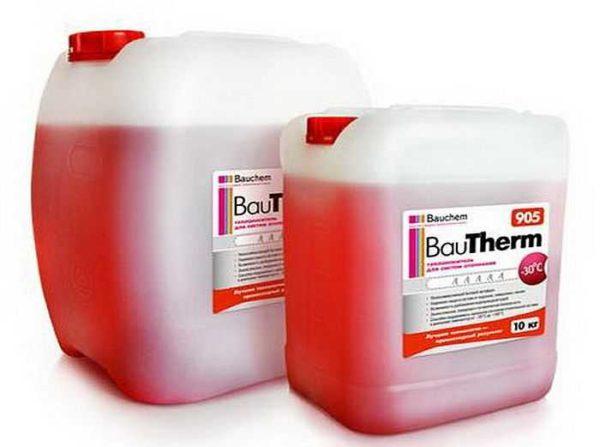
Despite its high toxicity, ethylene-glycol coolants are bought more often. This is most likely due to the price – propylene-glycol is twice as expensive. But ethylene-glycol antifreeze in its pure form is also chemically active, can foam, has increased fluidity. Foam and activity are fought with additives, and increased fluidity is not corrected in any way. When paired with toxicity, it is a dangerous combination. If there’s the slightest possibility, this antifreeze will leak. And since its vapors are toxic, it will not lead to anything good. So if at all possible, use propylene glycol.
| Naam | Substance | Weight | Operating temperature range | Beginning of crystallization | Thermal decomposition temperature | Service life | Water dilution possibility | Prijs |
|---|---|---|---|---|---|---|---|---|
| Dixis 65 | monoethylene glycol | 10 kg | -65°C ~ +95°C | -66°С | + 111°C | 10 years | yes | 850 rubles |
| Warm House – Eco | propylene glycol | 10 kg | -30°C to +106°C | -30°C | +170°С | 5 years | yes | 1050 rubles |
| Dixis TOP -30 | propylene glycol | 10 kg | -30°C to +100°C | – 31°C | +106°С | 3 years | yes | 960 rubles |
| ANTIFROST based on glycerin | glycerine | 10 kg | -30°C to +105°C | 4 years | geen | 700 rubles | ||
| PRIMOCLIMA ANTIFROST based on propylene glycol | propylene glycol | 10 kg | -30°C to +106°C | -30°C | +120°С | 5 years | yes | 762 rubles |
| THERMAGENT 30 | ethylene glycol | 10 kg | -20°C to +90°C | -30°C | +170°С | 10 years | geen | 650 rubles |
| Teplocom (glycerine) | glycerine | 10 kg | – 30°C to +105°C | 8 years | geen | 780 rubles |
Another important disadvantage is that ethylene-glycol reacts very badly to overheating, and overheating occurs at a rather low temperature. Already at +70°C a large amount of sediment is formed, which settles on the elements of the heating system. The deposits reduce the heat output, which again leads to overheating. In this regard, in systems with solid fuel boilers such antifreezes are not used.
Propylene glycol, on the contrary, is chemically almost neutral. It is less than all coolants react with other substances, overheating occurs at higher temperatures and leads to less consequences.
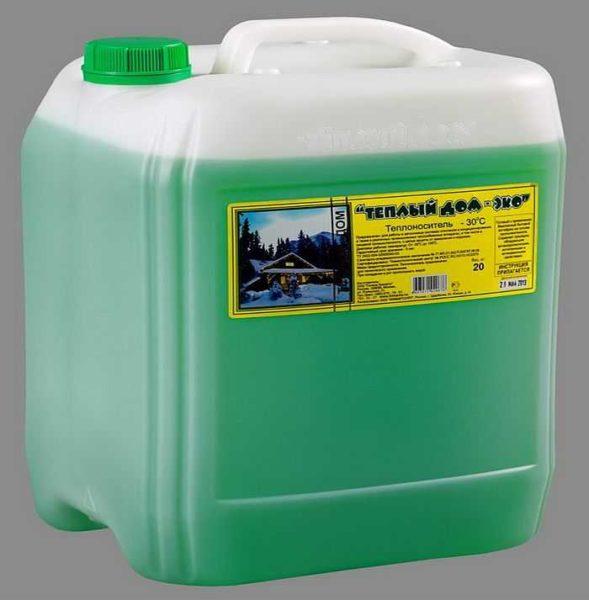
At the end of the last century, a glycerin-based antifreeze for heating systems was developed. It is something between ethylene and propylene coolants. It is safe for humans, but does not affect gaskets very well, also reacts badly to overheating. In terms of price and temperature characteristics, it is approximately in the same range as propylene coolants (see table).
Features of systems with antifreeze as a heat transfer medium
When designing a heating system, it is necessary to initially take into account the coolant. This is due to the lower heat capacity of non-freezing liquids, as well as their other properties. If all the equipment was designed for water, and pour antifreeze into it, the following problems may arise:
As you have realized, the best coolant for the heating system is water. It is better in characteristics and many times cheaper. If heating is threatened by defrosting, you have to pour antifreeze, but not automobile, and special – for heating. In this case, if there are enough funds, it is better to use propylene-glycol. Ethylene antifreeze is an extreme case. They are suitable in closed systems, in which special gaskets and automated boilers are installed, which will not allow overheating.
To make it easier for buyers to navigate, the coolants add colorants. In ethylene – red or pink, in propylene – green, in glycerinovye – blue. After some time, the color may become less intense or disappear altogether. This occurs due to thermal destruction of dyes, but on the properties of the antifreeze itself does not affect.
How to pump the coolant
Problems usually occur only with closed-type systems, as open systems are filled through an expansion tank. The coolant for the heating system is simply poured into it. It spreads through the system by gravitational force. It is important that all air vents are open when filling the system.
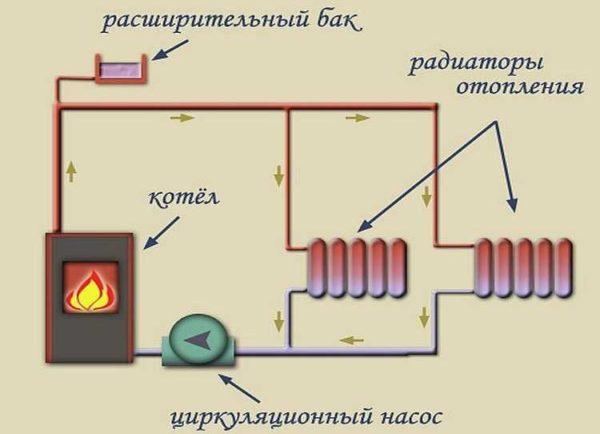
There are several ways to fill a closed heating system with coolant. There is a way to fill without the use of technology – gravity, there is with a submersible pump such as “Baby” or special, with the help of which make pressure test system.
Filling by gravity
This way to pump the coolant for the heating system, although it does not require equipment, but it takes a lot of time. It takes a long time to squeeze out the air and just as long to gain the necessary pressure. His, by the way, pumped with a car pump. So you will still need equipment.
We find the highest point. Usually it is one of the gas vents (it is removed). When filling, we open the tap to drain the coolant (the lowest point). When water runs through it, the system is filled.
With this method you can connect a hose from the water supply, you can pour the prepared water into a barrel, raise it above the entry point and so pour it into the system. Antifreeze is also poured in, but when working with ethylene glycol you will need a respirator, protective rubber gloves and clothing. If the substance gets on the fabric or other material, it also becomes toxic and must be destroyed.
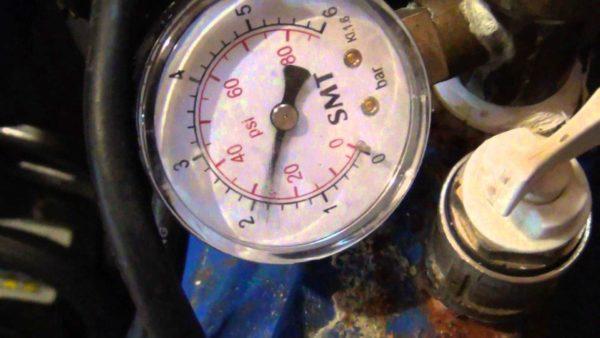
When the system is filled (from the tap for drainage ran water), take a rubber hose length of about 1.5 meters, attach it to the entrance to the system. Select the inlet so that the pressure gauge is visible. At this point we install a check valve and a ball valve. To the free end of the hose attach an easily removable adapter for connecting a car pump. Having removed the adapter, pour coolant into the hose (keep it raised up). Having filled the hose, using the adapter connect the pump, open the ball valve and pump the fluid into the system. It is necessary to make sure that no air is pumped in. When almost all the water contained in the hose is pumped, the valve is closed and the operation is repeated. On small systems to get 1.5 bar, you will have to repeat it 5-7 times, with large systems you will have to deal longer.
Pouring with a submersible pump
To create working pressure, the coolant for the heating system can be pumped with a low-power submersible pump of the Malysh type. It is connected to the lowest point (not the drain point of the system). The pump is connected through a ball valve and check valve, at the drain point of the system put a ball valve.
Pour the coolant into a container, lower the pump, turn it on. In the process of operation constantly add coolant – the pump should not push air.
In the process, keep an eye on the pressure gauge. As soon as its arrow moved from the zero mark – the system is filled. Until then, the manual air vents on the radiators can be open – air will escape through them. As soon as the system is full, they should be closed.
Then start to raise the pressure – keep pumping the coolant for the heating system. When it reaches the required mark, we stop the pump and close the ball valve. Open all air vents (on radiators too). The air escapes, the pressure drops. Turn the pump back on, pump some coolant until the pressure reaches the design value. Release the air again. Repeat this process until no more air comes out of the air vents.
Then you can start the circulation pump and bleed the air again. If the pressure remains within the normal range, the coolant for the heating system is pumped. It can be put into operation.
Using the pump for pressure testing
The system is filled in the same way as in the above case. In this case, a special pump is used. It is usually manual, with a container in which the coolant for the heating system is poured. From this container, the liquid is pumped through a hose into the system. It can be rented from companies that sell pipes for plumbing. In principle, it makes sense to buy it – if you use antifreeze, it will have to be periodically changed, that is, it will be necessary to fill the system again.
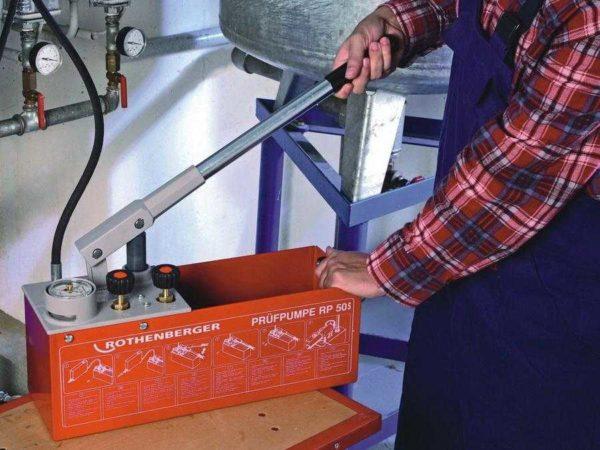
When filling the system, the lever goes more or less easily, when the pressure rises, it is already harder to work. There is a pressure gauge both on the pump and in the system. It can be monitored wherever it is more convenient. Then the sequence is the same as described above: pumped to the required pressure, bleed off the air, repeat again. So until there is no air left in the system. After – also start the circulator for about five minutes (or the whole system, if the pump is in the boiler), bleed the air. Also repeat several times.

